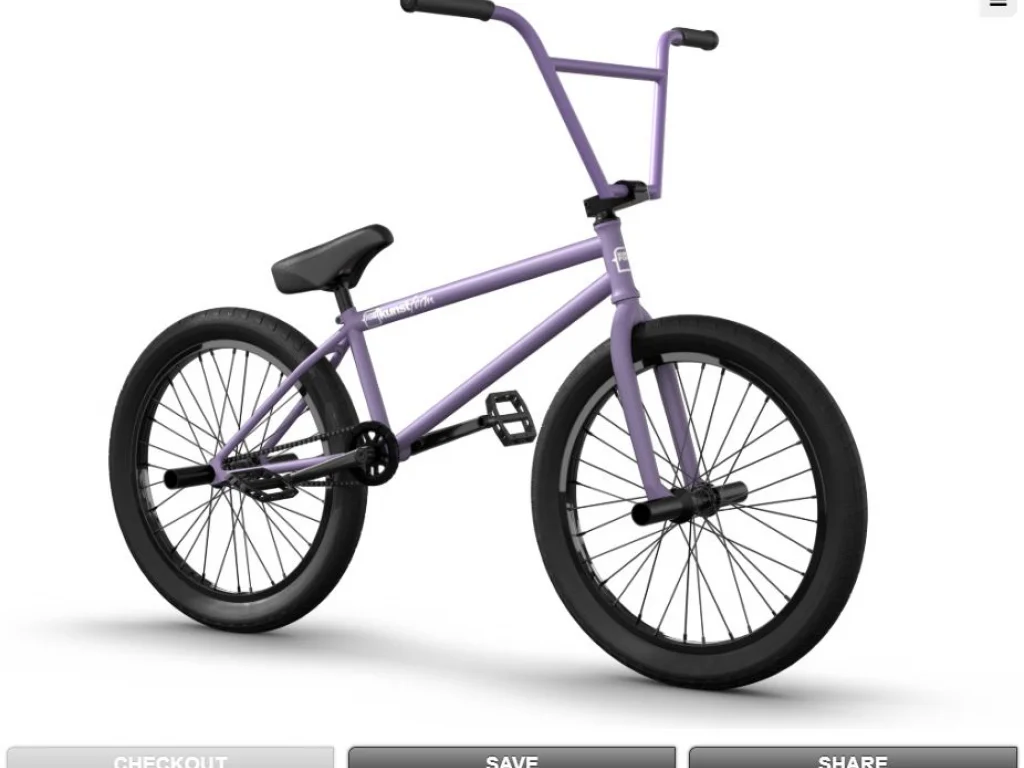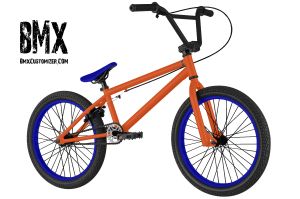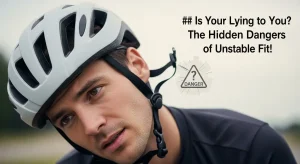Looking to make your BMX bike truly yours? Customizing your BMX bike isn’t just about looks—it’s about making it fit your style and riding needs perfectly.
Whether you want to boost performance, stand out at the park, or simply feel more connected to your ride, the right tweaks can make all the difference. In this guide, you’ll discover simple steps and expert tips to transform your BMX bike into a machine that’s as unique as you are.
Ready to take control and create a bike that turns heads? Let’s dive in.
Choosing The Right Frame
Choosing the right frame is a key step to customize a BMX bike. The frame affects how the bike feels and performs. It also impacts your safety and comfort. Picking the right frame means understanding its material and geometry. These two factors shape your riding experience.
Material Considerations
BMX frames come in different materials. Each has pros and cons for strength, weight, and cost.
- Steel:Strong and durable. It absorbs shocks well but is heavier.
- Chromoly:A type of steel. Lighter and stronger than regular steel. Common for BMX.
- Aluminum:Very light and rust-resistant. Less flexible, which can feel harsh.
- Carbon Fiber:Very light and stiff. Expensive and less common for BMX.
Select material based on your riding style and budget. Durability matters if you do tricks or jumps.
Frame Geometry
Frame geometry means the shape and angles of the frame tubes. It controls how the bike handles.
- Top Tube Length:Longer tubes give more stability. Shorter tubes allow quick turns.
- Chainstay Length:Short chainstays make the bike easier to lift and spin.
- Head Tube Angle:Steeper angles give faster steering. Slacker angles improve control.
- Bottom Bracket Height:Higher bottom brackets clear obstacles better but raise center of gravity.
Choose geometry that fits your riding style. Balance control, speed, and comfort.
Selecting Wheels And Tires
Selecting the right wheels and tires is crucial for customizing a BMX bike. These parts affect the bike’s speed, control, and ride comfort. Picking wheels and tires that match your riding style can improve your performance and enjoyment.
Different wheel sizes suit different tricks and terrains. Tire tread patterns also change how the bike grips surfaces.
Wheel Size Options
BMX wheels come in various sizes. The most common are 20-inch wheels, standard for most BMX bikes. These wheels offer good balance between speed and control.
Smaller wheels, like 16 inches, are popular for younger riders or street tricks that need quick turns. Larger wheels, such as 24 inches, provide smoother rides and better speed on flat ground.
- 20-inch: Best for all-around BMX riding
- 16-inch: Great for kids and technical tricks
- 24-inch: Better for cruising and racing
Tire Tread Types
Tire tread affects grip and rolling resistance. Smooth tires are best for skate parks and smooth surfaces. They roll faster and make tricks easier.
Knobby tires have deep tread patterns. They provide better grip on dirt and rough terrain. Ideal for off-road BMX riding or dirt jumps.
Semi-slick tires combine smooth centers with treaded edges. They offer a mix of speed and traction. Good for street riding and light dirt trails.
- Smooth: Fast rolling, best on pavement
- Knobby: Strong grip on dirt and rough surfaces
- Semi-slick: Balanced for street and light off-road
Handlebars And Grips
Handlebars and grips play a crucial role in how your BMX bike feels and performs. They affect your control, comfort, and even style. Customizing these parts can transform your riding experience, making every trick and ride smoother and more enjoyable.
Bar Height And Width
Choosing the right handlebar height changes your riding posture significantly. Taller bars offer more control and comfort, especially for street riding or cruising. Shorter bars give you better maneuverability for technical tricks.
Width matters just as much as height. Wider bars provide stability, great for beginners or riders who like big air. Narrower bars make it easier to spin and whip your bike during tricks. Ask yourself: Are you prioritizing control or agility?
Grip Materials
Grips are your direct connection to the bike, so material choice impacts comfort and grip. Soft rubber grips absorb shock well and feel comfy for long rides. Harder plastic grips last longer but might feel rough on your hands during intense sessions.
Think about your riding style and weather conditions too. Foam grips work great in dry weather but can slip when wet. Silicone or rubber grips often provide the best balance of comfort and grip in all conditions.
Customizing The Saddle
Customizing the saddle of your BMX bike can greatly improve your riding comfort and style. The saddle is where you sit, so choosing the right one matters a lot. Small changes can make a big difference in how you ride and feel.
Saddle Types
Saddles come in various shapes and sizes. Each type suits different riding styles and preferences.
- Street Saddles:Narrow and firm for tricks and quick moves.
- Freestyle Saddles:Wider and padded for more comfort during long rides.
- Race Saddles:Lightweight and streamlined for speed and agility.
- Comfort Saddles:Thickly padded for casual riding and extra support.
Choosing the right saddle type helps you ride longer without pain.
Seat Post Adjustments
Adjusting the seat post changes your riding position. It affects both comfort and control.
- Height:Set the saddle high enough to allow leg extension but not too high.
- Angle:Tilt the saddle slightly up or down for better support.
- Position:Move the saddle forward or backward to balance weight on the bike.
Test different adjustments to find what feels best for you.
Brakes And Brake Systems
Brakes are crucial for safety and control on a BMX bike. Choosing the right brake system affects your riding style and performance. Understanding different types and parts helps customize your bike effectively.
Rim Vs. Disc Brakes
Rim brakes grip the bike’s wheel rim to stop. They are lighter and easier to maintain. Rim brakes work well on dry roads but lose power when wet.
Disc brakes use a rotor attached to the wheel hub. They offer stronger stopping power and work well in all weather. Disc brakes can be heavier and need more upkeep.
- Rim brakes: lighter, simple, less stopping power in rain
- Disc brakes: stronger, better in wet, heavier, more maintenance
Brake Lever Choices
Brake levers come in different shapes and sizes. Choose one that fits your hand comfortably. Some levers offer adjustable reach for better control.
Material matters too. Aluminum levers are strong and light. Plastic levers are cheaper but less durable.
- Comfortable grip improves braking response
- Adjustable reach suits different hand sizes
- Aluminum levers last longer than plastic ones

Credit: www.kunstform.org
Pedals And Cranks
The pedals and cranks play a huge role in how your BMX bike feels and performs. They connect your power to the bike, making every pedal stroke count. Choosing the right setup can boost your control, comfort, and speed.
Pedal Materials
Pedals come in a range of materials, each affecting grip, weight, and durability. Plastic pedals are lightweight and budget-friendly but wear out faster. Metal pedals, especially aluminum or steel, offer better grip and last longer, though they add a bit more weight.
Some riders prefer pedals with pins for extra traction. These tiny metal studs bite into your shoes, preventing slips during tricks or rough rides. Think about where and how you ride—are you doing street tricks that need solid foot hold, or cruising the park where lightweight pedals might be better?
Crank Arm Length
The length of your crank arms changes your pedaling efficiency and bike control. Shorter cranks (around 165mm) allow quicker pedal strokes and better clearance for tricks, but might reduce leverage on climbs. Longer cranks (170mm or more) provide more power but can limit your pedal speed and clearance.
Try different crank lengths to see what fits your riding style. If you struggle with pedal strikes on rails or ledges, shorter cranks could solve that. On the other hand, if you want more torque for sprinting or pumping, longer cranks might be your friend.
Personalizing With Paint And Decals
Personalizing your BMX bike with paint and decals transforms it from ordinary to unique. This process lets you express your style and make your bike stand out. Choosing the right colors and designs gives your bike a fresh and exciting look.
Painting your BMX frame and adding decals requires care and creativity. Simple techniques can create bold effects. Decal placement plays a big role in the overall appearance. Both paint and decals work together to create a custom look that matches your personality.
Paint Techniques
Start by cleaning the bike frame thoroughly. Use sandpaper to smooth the surface for better paint hold. Select spray paint designed for metal for durability. Use thin, even coats to avoid drips and runs. Let each coat dry before applying the next one.
Try these paint techniques for unique effects:
- Fade: Blend two colors to create a smooth gradient.
- Stencils: Use cut-out shapes for sharp designs.
- Splatter: Flick paint for a random, artistic look.
- Masking Tape: Block off areas to create stripes or patterns.
Decal Placement Ideas
Decals add detail and personality to your bike. Position decals where they catch the eye but do not interfere with moving parts. Common places include:
- Top tube
- Down tube
- Forks
- Chainstay
- Seat tube
Mix sizes and shapes for a balanced look. Overlapping small decals can create custom patterns. Keep decals flat and smooth to prevent peeling. Seal decals with clear coat paint for extra protection.
Adding Accessories
Adding accessories to a BMX bike enhances its style and functionality. Accessories make your bike safer and more fun to ride. They also help express your personality and improve performance. Choose accessories that fit your riding style and needs. Small changes can make a big difference.
Lights And Reflectors
Lights and reflectors improve your visibility on the road. Bright front and rear lights help you see and be seen. Reflectors on wheels and pedals increase safety at night. Use LED lights for longer battery life and brightness. Install lights firmly so they don’t wobble during rides. Reflectors come in different shapes and colors to match your bike’s look.
- Front white light for clear vision
- Rear red light for visibility to drivers
- Wheel reflectors to catch side light
- Pedal reflectors for extra safety
Bmx Pegs And Stunt Accessories
Pegs are essential for riders who do tricks and stunts. They attach to the wheel axles and provide foot support. Pegs come in steel, aluminum, or plastic materials. Choose pegs with good grip to prevent slipping. Other stunt accessories include handlebar grips and frame guards. These protect your bike and improve control. Stunt accessories make your BMX ready for freestyle riding.
- Steel pegs for durability and strength
- Plastic pegs for lightweight and style
- Handlebar grips for better hold
- Frame guards to prevent scratches
Maintenance Tips
Maintaining your BMX bike keeps it safe and fun to ride. Regular care helps parts last longer and work better. Simple checks and cleaning stop small problems from growing. Spend a little time on maintenance to enjoy smooth rides every time.
Routine Checks
Check your BMX bike before every ride. Look at the tires for cuts or low air. Spin the wheels to see if they wobble. Test the brakes to make sure they stop well. Tighten any loose bolts on the frame and handlebars. Make sure the chain moves smoothly and is not too loose.
Cleaning And Lubrication
Clean dirt and grime off your bike often. Use a soft brush and mild soap with water. Avoid spraying water on bearings and sensitive parts. Dry the bike with a clean cloth after washing. Apply bike-specific lubricant to the chain and moving parts. Wipe off extra oil to stop dust build-up. Regular cleaning stops rust and keeps parts working well.

Credit: www.youtube.com

Credit: www.bmxcustomizer.com
Frequently Asked Questions
What Are The Basic Tools Needed To Customize A Bmx Bike?
To customize a BMX bike, you need essential tools like Allen wrenches, screwdrivers, a chain breaker, and tire levers. These tools help adjust parts, replace components, and fine-tune your bike for better performance and style.
How Can I Choose The Right Bmx Bike Parts?
Select BMX parts based on your riding style and skill level. Focus on durable materials, proper fit, and compatibility with your bike frame. Quality parts improve control, safety, and the bike’s overall look.
What Are Popular Bmx Bike Customization Ideas?
Popular BMX customizations include changing handlebars, upgrading tires, adding colorful grips, and swapping pedals. These modifications enhance comfort, control, and personal style while improving the bike’s functionality.
How Do I Adjust Bmx Bike Brakes Properly?
Adjust BMX brakes by aligning brake pads with the rim and ensuring even pressure. Tighten brake cables for responsiveness. Proper brake adjustment ensures safety and smooth stopping power.
Conclusion
Customizing a BMX bike lets you create a unique ride. Choose parts that fit your style and needs. Small changes can make a big difference in performance. Take your time and enjoy the process. Your bike will feel better and look great too.
Keep practicing and try new upgrades as you learn. A personalized BMX bike makes riding more fun every day.





